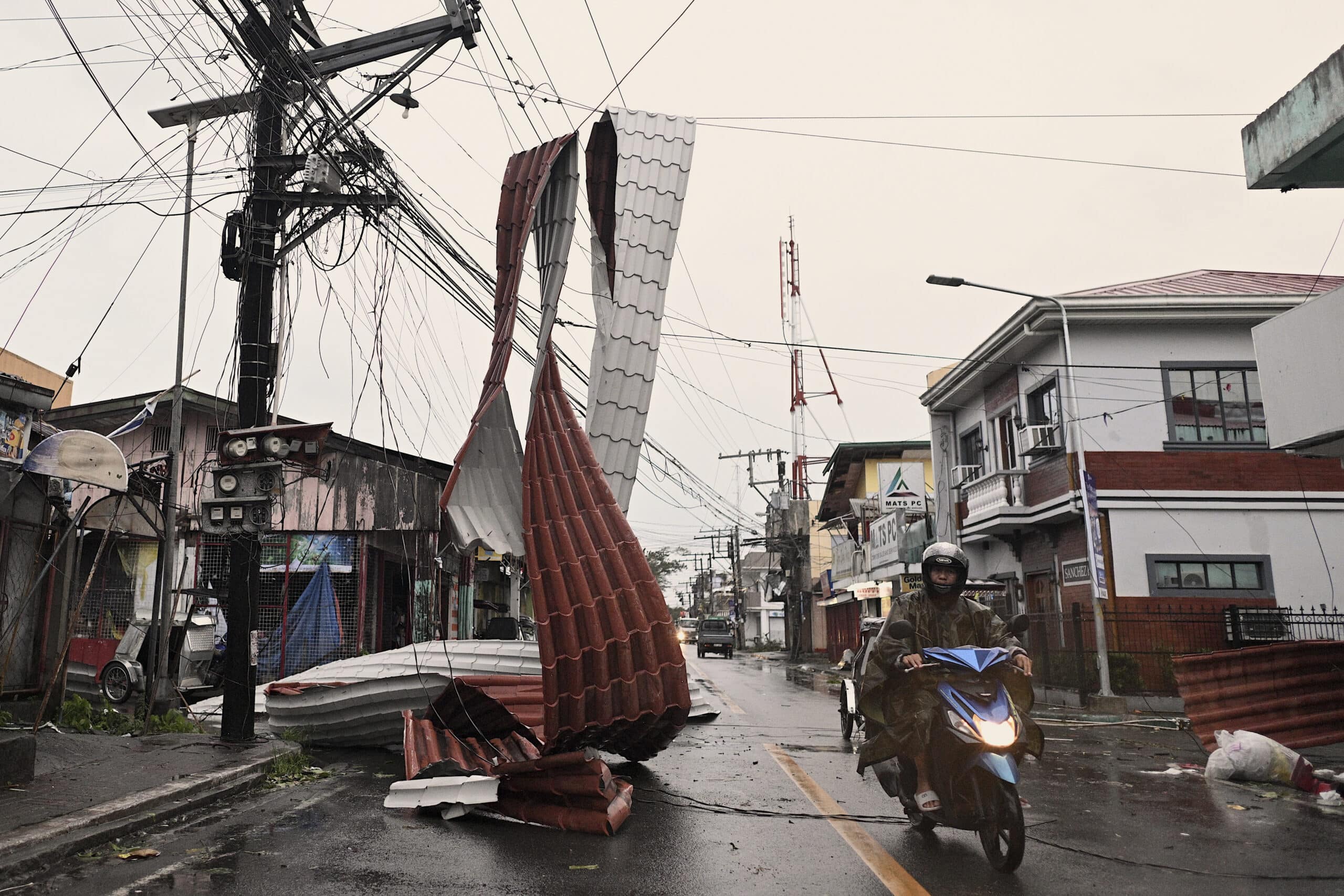

Motorists ride past a part of a roof suspended on electric wires blown by strong winds caused by Typhoon Man-yi (local name: Pepito) along a street in the municipality of Baler, Aurora province, northeastern Philippines Monday, Nov. 18, 2024. (Associated Press Photo/Noel Celis)
MANILA, Philippines — Typhoon Man-yi, whose local name is Pepito, left at least seven people dead in a landslide, destroyed houses, and displaced large numbers of villagers before blowing away from the northern Philippines, worsening the crisis wreaked by multiple back-to-back storms, officials said Monday.
Man-yi was one of the strongest of the six major storms to hit the northern Philippines in less than a month and had sustained winds of up to 195 kilometers (125 miles) per hour when it slammed into the eastern island province of Catanduanes on Saturday night, Nov. 16.
Article continues after this advertisementUS Defense Secretary Lloyd Austin met President Ferdinand Marcos Jr. in Manila and offered his prayers, announcing an additional $1 million in humanitarian aid for typhoon victims. He told Marcos he had authorized US troops to help Filipino forces provide lifesaving aid.
FEATURED STORIES NEWSINFO House approves bill seeking employment of seniors on final reading NEWSINFO Pagasa says 3 weather systems to bring cloudy skies, rains Nov 19 NEWSINFO PNP cautions malls vs guards in Christmas costumesTorrential rains and fierce wind unleashed by Man-yi set off a landslide early Monday in the northern town of Ambaguio in Nueva Vizcaya province that buried a house and killed seven people, including children, and injured three others inside, regional police chief Brig. Gen. Antonio P. Marallag Jr. said.
READ: OCD clarifies no fatalities from Pepito; 1 death due to accident
Article continues after this advertisementArmy troops, police, and villagers were scrambling to search for three other people who were believed to have been entombed in the avalanche of mud, boulders, and uprooted trees, Marallag said.
Article continues after this advertisementDisaster response officials said they were checking if the deaths of two villagers in a motorcycle accident and an electrocution were directly related to Man-yi’s onslaught so they could be added to the overall death toll. They said a separate search was underway for a couple and their child after their shanty was swept away in rampaging rivers in northern Nueva Ecija province.
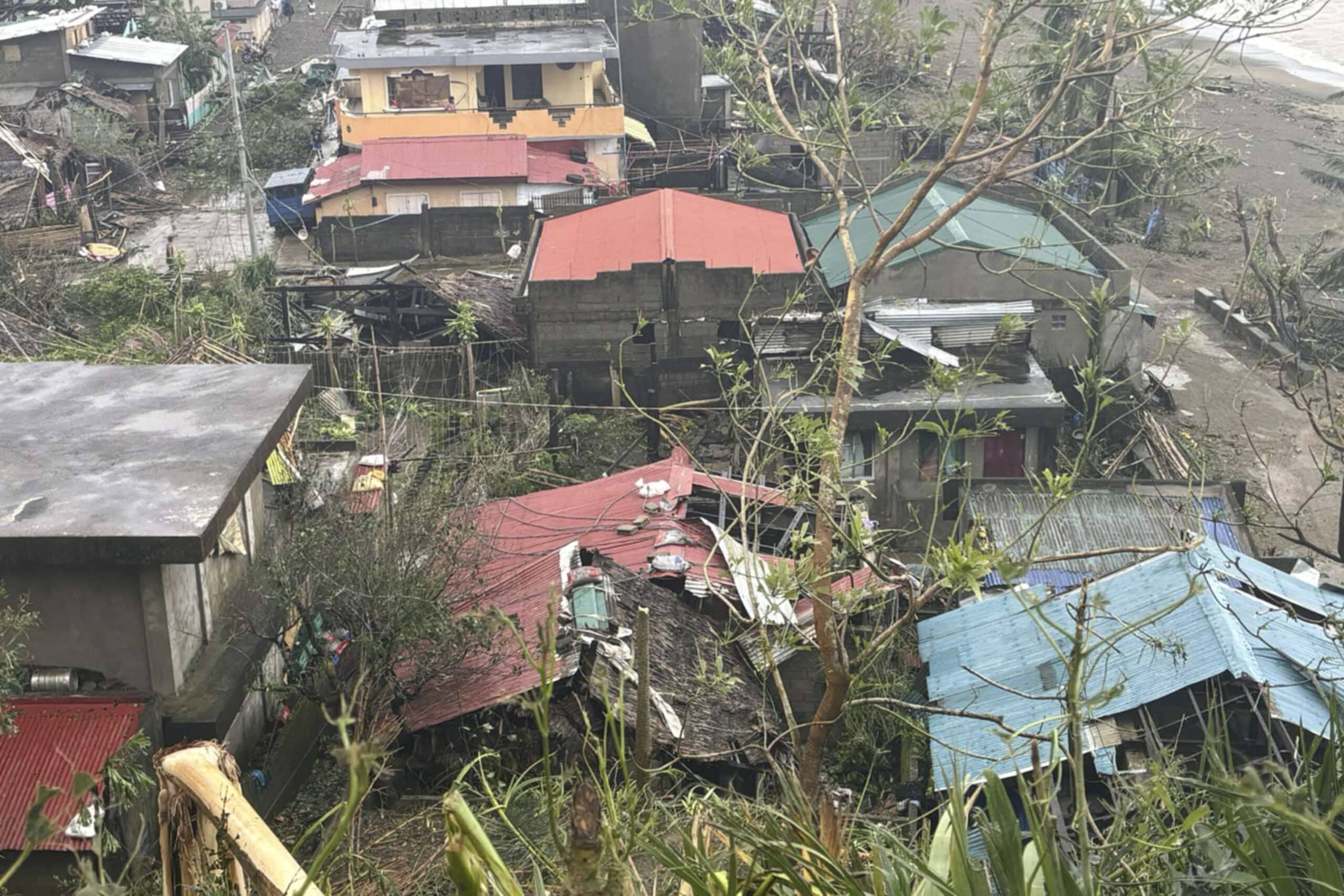

This photo provided by the MDRRMO Viga Catanduanes, shows damaged houses caused by Typhoon Man-yi (local name: Pepito) in Viga, Catanduanes province, northeastern Philippines, Sunday, Nov. 17, 2024. (MDRRMO Viga Catanduanes via Associated Press)
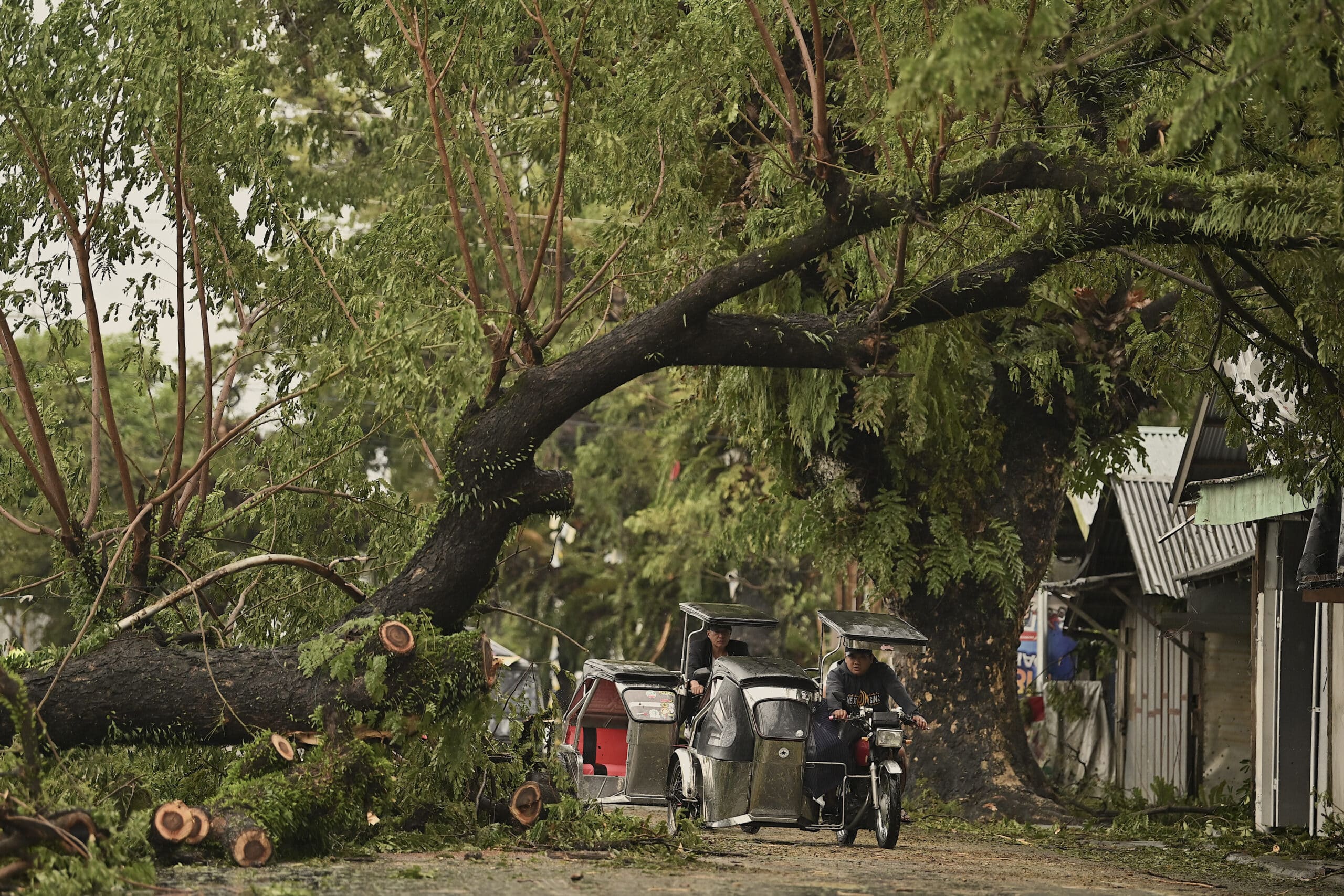

Motorists pass by toppled trees caused by strong winds from Typhoon Man-yi (local name: Pepito) along a street in the municipality of Baler, Aurora province, northeastern Philippines, Monday, Nov. 18, 2024. (Associated Press Photo/Noel Celis)
More than a million people were affected by the typhoon and two previous storms, including nearly 700,000 who fled their homes and moved to emergency shelters or relatives’ homes, according to the Official of Civil Defense.
Article continues after this advertisementNearly 8,000 houses were damaged or destroyed and more than 100 cities and towns were hit by power outages due to toppled electric posts, it said.
In the worst-hit province of Camarines, officials pleaded for additional help after fierce winds and rain damaged more houses and cut off electricity and water supplies in the entire province, along with cellphone connections in many areas, provincial information officer Camille Gianan said.
Welfare officials transported food aid, drinking water and other help but more is needed over the coming months, Gianan said. Many villagers will need construction materials to rebuild their houses, she said.
“They have not recovered from the previous storms when the super typhoon hit,” Gianan told The Associated Press. “It’s been one calamity after another.”
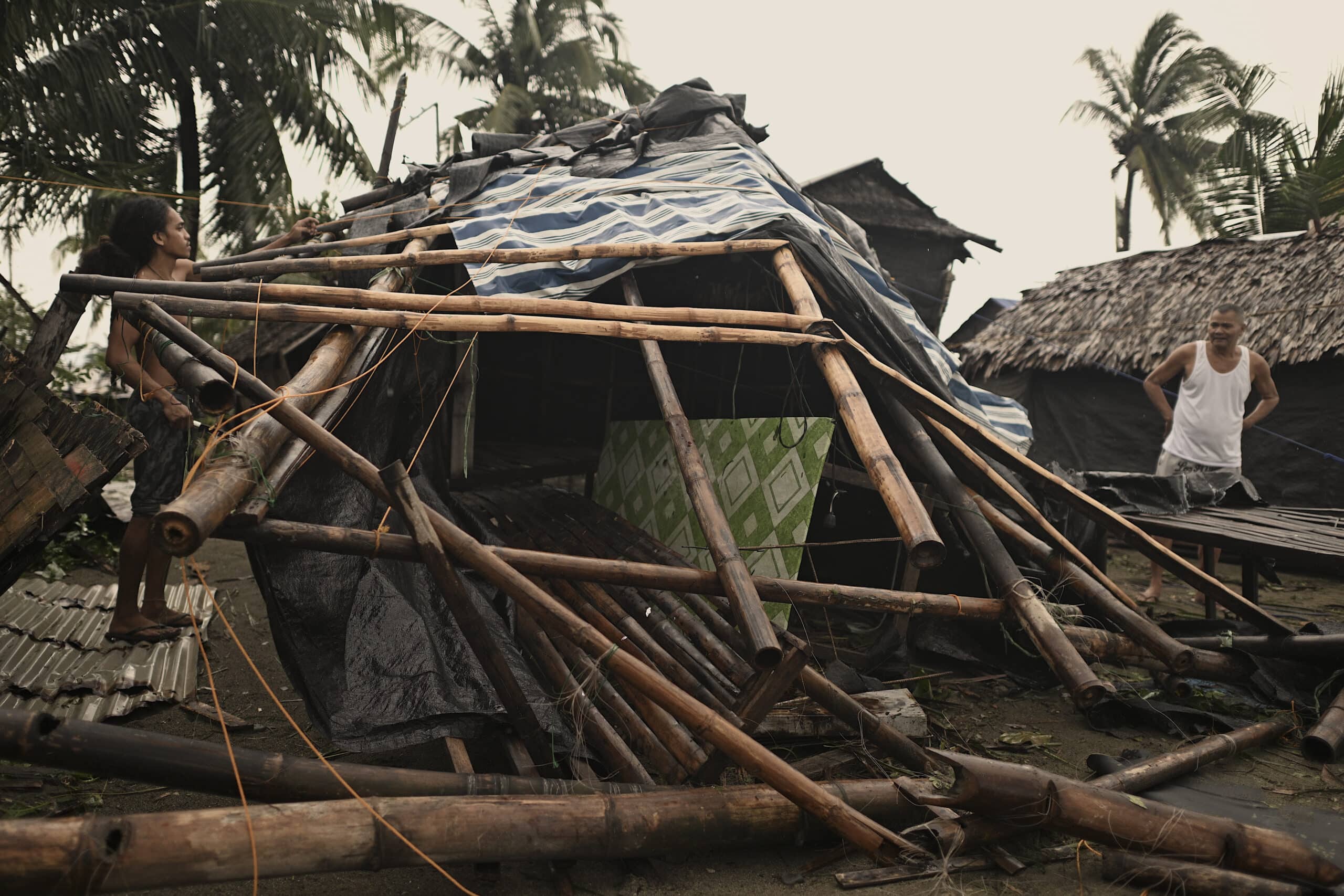

A resident checks his damaged home that was blown off by strong winds caused by Typhoon Man-yi in the municipality of Baler, Aurora province, northeastern Philippines Monday, Nov. 18, 2024. (Associated Press Photo/Noel Celis)
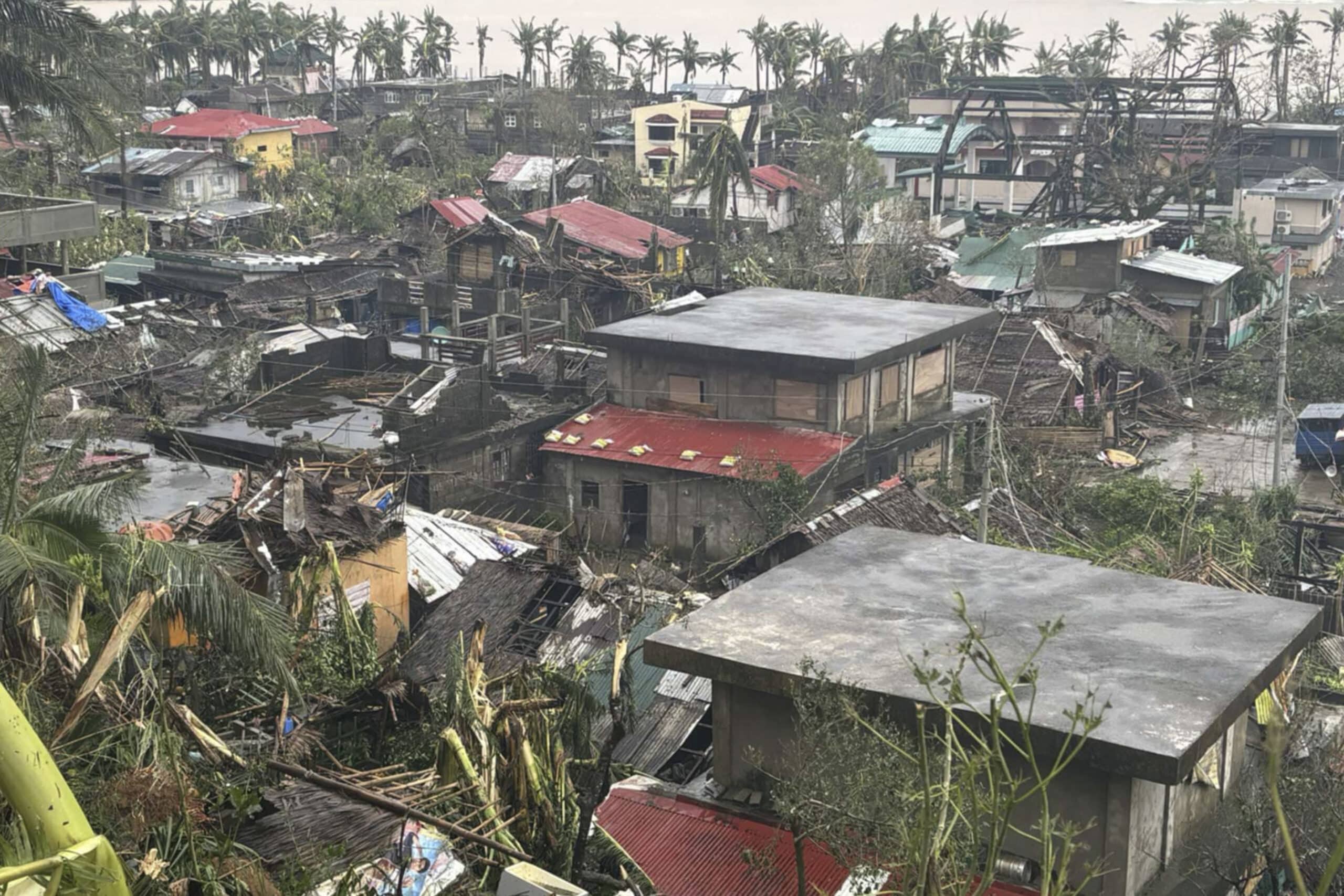

This photo provided by the MDRRMO Viga Catanduanes shows damaged houses caused by Typhoon Man-yi in Viga, Catanduanes province, northeastern Philippines, Sunday, Nov. 17, 2024. (MDRRMO Viga Catanduanes via Associated Press)
The rare number of back-to-back storms and typhoons that lashed Luzon — the country’s largest and most populous island — in just three weeks left more than 160 people dead, affected 9 million people and caused such extensive damage to communities, infrastructure and farmlands that the Philippines may have to import more rice, a staple food.
In an emergency meeting as Man-yi approached, Marcos asked his Cabinet and provincial officials to brace for “the worst-case scenario.”
READ: Pepito weakens but impact still ‘massive’
At least 26 domestic airports and two international airports were briefly shut and inter-island ferry and cargo services were suspended due to rough seas, stranding thousands of passengers and commuters. Most transport services have now resumed, according to the Civil Aviation Authority of the Philippines and the coast guard.
Subscribe to our daily newsletter
The US, Manila’s treaty ally, along with Singapore, Malaysia, Indonesia, and Brunei provided cargo aircraft and other storm aid to help the government’s overwhelmed disaster-response agencies. Last month, major storm Trami (local name: Kristine) left scores of people dead after dumping one to two months’ worth of rain in just 24 hours in several towns.
The Philippines is battered by about 20 typhoons and storms each year. It’s often hit by earthquakes and has more than a dozen active volcanoesjiliko, making it one of the world’s most disaster-prone countries.
READ NEXT Marcos urges gov’t agencies to avoid lavish Christmas pa... Pagasa says 3 weather systems to bring cloudy skies, rains Nov 19 EDITORS' PICK Kris Aquino grateful as son Josh recovers from COVID-19 Roger Federer pens tribute to retiring Rafael Nadal Group calls on Victoria Kjaer Theilvig to decry ‘exploitation’ of ‘blood pearls’ SCHEDULE: Gilas Pilipinas at Fiba Asia Cup 2025 qualifiers Kremlin vows 'response' if Ukraine fires US missiles into Russia MOST READ Poll watchdogs laud Comelec’s update on social media regulations Comelec lists approved areas for mock elections, no date set yet House insists on ‘ayuda’ Senate wants to defund Peso may fall to 59, BSP to intervene Follow @FMangosingINQ on Twitter --> View comments